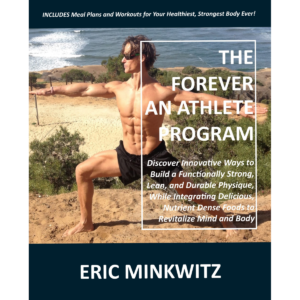Strength and Conditioning for the Downhill Skier (Part 1)
Temperatures are crisp, leaves are falling, and there is a scent of winter in the air. Die-hard skiers are making plans to head to the mountains over the next few months. In order to maximize your performance on the slopes and minimize injury, you need specialized ski preparation. According to US Ski Coach J. Karlsson, to ski with great intensity, the body produces tremendous levels of peak force, and enormous amounts of torque are distributed through the knees (2). This, coupled with a lack of physical preparation for the slopes, yields a high incidence of ski-related knee injuries. The American Journal of Sports Medicine reports thatthe incidenceof ACL tendon disruption was 4.2 injuries per 100,000 skier-days, in 1999 (3).
To reduce injury risk and to challenge the skier to be more proficient at the start of the season, I devised the following training program. For example, the July to December period is a perfect time period to embark on a periodized ski training program; that is, a program whose training parameters (intensities, loads, skill selection, volume, rest, etc.) change through the course of the six month period.
A rough breakdown of the six month ski preparation macrocycle is as follows:
- Month 1: active rest, flexibility, light aerobic conditioning, nutrition planning
- Month 2 to 3: central aerobic conditioning, basic strength, core lifting techniques
- Month 4 to 5: power techniques, sprint interval aerobic training, balance training
- Month 6: power training, jump training, aerobic maintenance, injury prevention
When creating an off-season program for any sport, I first identify the key components/demands of the sport, and then attack each accordingly. Downhill skiing is very technical, and attention to the the major muscle groups involved, stabilizing muscles, angles of force, and muscle recruitment patterns, will separate the skiers who make the final chair from those who are sipping hot chocolate by 2pm!
Individual Skill Selection:
- Strength: The maximum force that can be exerted in a voluntary contraction. This includes absolute strength (one rep maxes, or 1RM) and strength endurance.
- Flexibility: This training targets muscle fibers as well as joint mobility, especially in the quads, hamstrings, lower back, and hips.
- Aerobic and anaerobic capacity: A skier should train these skills through a time frame that corresponds to his/her competitive skiing run.
- Power: The all important product of force (strength) and velocity.
- Dynamic balance and injury prevention: This applies to the body’s ability to maintain balance and joint alignment as your joints and connective tissues are stressed with heavy forces and changing snow surfaces and grades.
- Quickness and Agility: This pertains to the ability to produce quick and responsive movements by moving multiple muscle groups in a synergistic fashion.




Leave A Comment